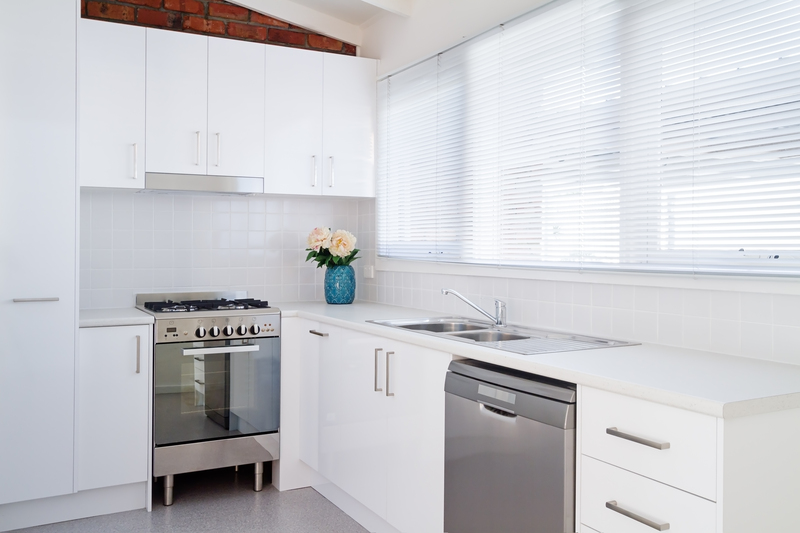How to Keep Your Move Smooth and Stress Free
Moving can be both an exciting and overwhelming experience, filled with anticipation and anxiety about the unknown. Whether you're relocating across the street or to a new city, the process often comes with a myriad of challenges. But with the right approach, your move can be seamless and even enjoyable! This comprehensive guide explains everything you need to know about how to keep your move smooth and stress free. Read on to learn expert tips, practical strategies, and helpful checklists that will transform your moving day into a breeze.
Why Is Moving So Stressful?
Before jumping into solutions, it's important to understand why moving can create tension and anxiety. Moving involves many factors, including physical labor, emotional goodbyes, financial costs, and the uncertainty of change. Some common stressors include:
- Packing up a lifetime's worth of belongings
- Coordinating schedules and logistics
- Managing utility transfers and address changes
- Adapting to a new environment and community
- Budgeting for unexpected expenses
Knowing these sources of stress gives you the power to address them proactively. Now, let's dive into the strategies for a stress free and smooth move.

12 Steps to Keep Your Move Smooth and Stress Free
Preparation and organization are the cornerstones of a seamless move. Use the following step-by-step plan to ensure you stay calm, focused, and organized throughout your relocation.
1. Start Planning Early
A successful move begins with early preparation. As soon as you know your moving date, create a detailed timeline. A moving checklist will help you track tasks, prioritize deadlines, and avoid last-minute surprises. Download or make your own personalized moving checklist, and segment it by weeks leading up to your move.
- 8 Weeks Out: Begin sorting and decluttering each room.
- 6 Weeks Out: Research moving companies or book a truck.
- 4 Weeks Out: Notify utilities and start packing non-essentials.
- 2 Weeks Out: Confirm bookings and finish most packing.
- Moving Week: Pack essentials bag and clean the house.
Planning in advance alleviates anxiety and makes your move as smooth as possible.
2. Declutter Before You Pack
Moving is the perfect opportunity to reassess what you truly need. Decluttering lightens your load and saves you money on packing supplies or moving services. To make your move easier, sort your belongings into categories:
- Keep: Items you love and use regularly
- Donate/Sell: Gently used items in good condition
- Recycle/Dispose: Broken or outdated items
Host a garage sale or use online platforms like Facebook Marketplace to sell valuables. Less to pack means less to worry about!
3. Gather Quality Packing Supplies
Don't skimp on moving materials. High-quality supplies protect your belongings and save you time during the move. Essentials include:
- Sturdy boxes in varied sizes
- Packing tape and dispensers
- Bubble wrap, packing paper, and foam peanuts
- Permanent markers and colored labels
- Ziplock bags for small parts
Pro tip: Source free boxes from local stores or friends, but inspect their condition first. Strong boxes keep your move both safe and smooth.
4. Pack Methodically and Label Clearly
One of the best ways to have a stress-free move is to pack systematically:
- Pack one room at a time. Keep items from each space together for easier unpacking.
- Label boxes on multiple sides with the room name and contents.
- Use a numbering system and maintain a master inventory list.
- Mark boxes with fragile items and stack them carefully.
Clear labeling and organized packing ensure movers know where to put things--making your move smooth and efficient.
5. Hire a Reputable Moving Company
Consider hiring professional movers for a truly stress-free relocation. Research companies, read reviews, and request quotes from at least three providers. Ask about:
- Insurance options for damaged or lost items
- Hidden fees or cancellation policies
- Experience with specialty items (pianos, art, fragile electronics)
- Availability and flexibility with your schedule
Bonus Tip: Check for licensing and accreditation. For interstate moves, verify U.S. Department of Transportation registration.
6. Take Care of Utilities and Address Changes in Advance
Avoid last-minute stress by scheduling utility transfers (water, electricity, gas, internet) ahead of time. Forward your mail and notify banks, schools, and subscriptions about your new address. Use the United States Postal Service online portal for quick address changes.
Update your driver's license, voter registration, and insurance policies to match your new location.
7. Pack an Essentials Bag
Keep your first 24-48 hours at your new home comfortable by preparing an essentials kit. Include:
- Toiletries and medications
- Phone chargers and important electronics
- Snacks, water bottles, and basic kitchen supplies
- Change of clothes and pajamas
- Important documents and valuables
Having daily necessities at hand makes your first night stress-free while you settle in and unpack.
8. Use Color Coding for Boxes
Speed up the unloading and unpacking process by assigning a color to each room. Use colored stickers or tape on boxes and a matching note on each door at your new home. This system lets movers or friends quickly identify where each box belongs.
Color coding is a simple yet powerful trick to maintain an organized and smooth moving day.
9. Take Photos of Electronics and Furniture
Before unplugging cords or disassembling furniture, snap photos of how cables are connected or components fit together. These visual guides will make reassembly fast and stress-free.
Bag screws and fasteners with corresponding parts and label them clearly.
10. Communicate With Your Moving Team
Whether you're working with professional movers, family, or friends, clear communication is key. Share the moving plan, schedules, and layout of your new home. Assign tasks and roles ahead of time.
Everyone on the same page ensures a coordinated and smooth move.
11. Prepare Your New Home Before Arrival
If possible, visit your new home before moving day. Clean, make minor repairs, and confirm utilities are working. Measure doorways and plan the best path for large furniture.
By preparing in advance, your move-in can start off on the right foot--making the transition both smooth and free of unwanted stress.
12. Give Yourself Time to Settle In
Once everything has been moved, resist the urge to unpack everything at once. Focus first on essential rooms like the kitchen, bathroom, and bedrooms. Take breaks, explore your new neighborhood, and remember that settling in takes time.
A gradual approach helps keep your overall moving experience stress free and enjoyable.
Common Mistakes That Can Complicate Your Move
Understanding frequent missteps helps you avoid them. Here are mistakes to watch out for:
- Underestimating time required for packing and moving
- Hiring unreliable or unlicensed movers
- Mixing items from different rooms in the same boxes
- Forgetting to keep important documents accessible
- Not labeling boxes or keeping an inventory list
- Overpacking boxes or using weak packing materials
Avoid these mistakes to keep your move smooth, organized, and as stress free as possible.
Stress-Reducing Tips for Moving With Kids or Pets
Moving with children or animals can add another layer of complexity. To help make your move smooth and stress free for the whole family, follow these guidelines:
- Explain the move to kids early and engage them in the process
- Pack a separate bag with their favorite toys, snacks, and comfort items
- Maintain routines as much as possible leading up to and after the move
- Arrange for a pet sitter or safe space for animals during moving day
- Childproof and pet-proof your new home before fully unpacking
Keeping family members comfortable eases the transition for everyone and keeps stress levels low.
Self-Care to Make Your Move Truly Stress Free
Don't forget about your mental and physical well-being during the moving process. To maintain your energy and positive outlook, remember to:
- Get plenty of sleep before and after moving day
- Hydrate and eat nourishing meals
- Take breaks and stretch to prevent injury or fatigue
- Practice mindfulness, meditation, or breathing exercises
- Lean on friends and family for emotional support
Looking after yourself is the foundation for a truly smooth and stress free moving experience.

Frequently Asked Questions: Smooth and Stress Free Moves
Should I hire movers or move myself?
It depends on your budget, time, and complexity of the move. Hiring professionals can save you time and reduce physical strain. For smaller moves, doing it yourself (with friends) may be more affordable.
How far in advance should I start packing?
Aim to begin packing six to eight weeks before your move. Start with non-essential items and save daily necessities for last.
What's the best way to move fragile items?
Use plenty of bubble wrap, packing paper, and sturdy boxes. Label each box as fragile, and avoid stacking heavy items on top. If possible, transport valuables yourself.
How can I simplify unpacking after a move?
Label boxes with both room and contents. Use a color-coded system. Start by setting up crucial rooms, then tackle one box at a time.
Conclusion: Enjoy a Smooth and Stress Free Moving Experience
While moving may never be completely without challenges, following an organized professional approach will help you keep your move smooth and stress free. Remember, early planning, decluttering, clear labeling, and self-care are the keys to success. Seek help from reputable movers or loved ones as needed, and approach the experience as a new adventure.
By applying these strategies, you'll arrive at your new home ready to start a fresh, positive chapter--without unnecessary stress.
Happy moving!
